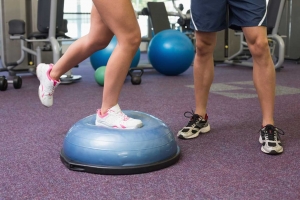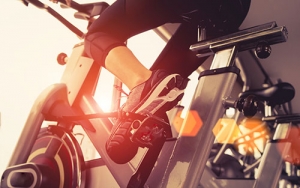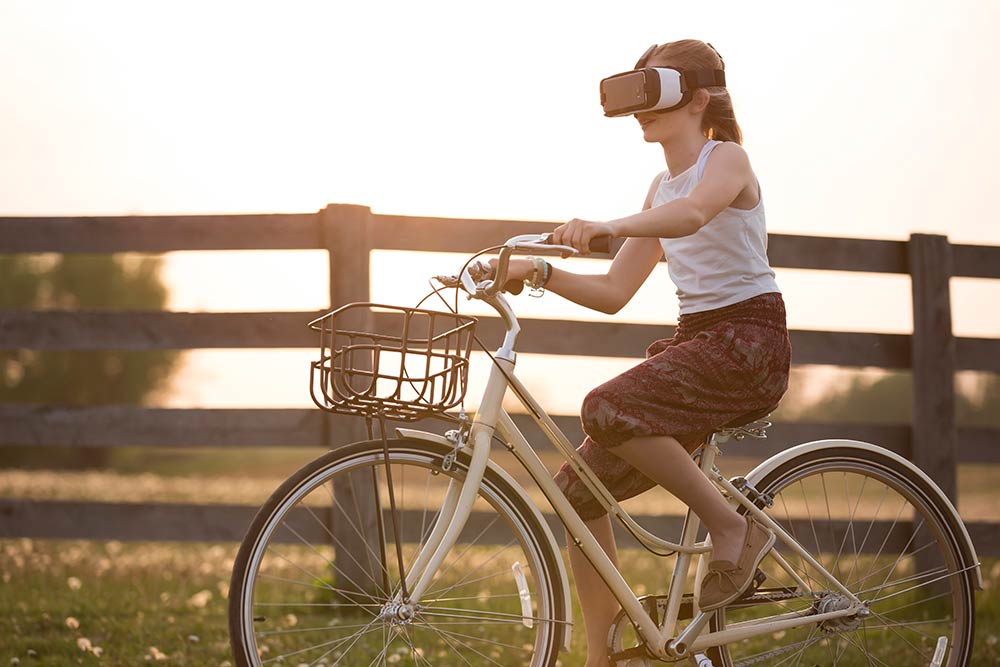An Alternative Approach to Sports Injuries

Dayton Kelly
An Alternative Approach to Sports Injuries
Virtual reality devices have flooded the gaming and entertainment markets. Advances in realism and affordability have stolen the hearts of consumers, increasing their commonality in homes. While it has certainly attracted the eye of the public, virtual reality has also struck the interest of exercise physiologists. Presently in the research spotlight are virtual reality devices designed to improve rehabilitation exercise programs for an alternative approach to sports injuries for clinical and geriatric populations (Howard, 2017).
Traditional rehabilitation programs consist of simple, repetitive exercises that are often considered tedious (Howard, 2017; Fung, Richards, Malouin, McFadyen, & Lamontagne, 2006). Lack of interest and motivation to perform the program reduces adherence and effort during exercise, compromising performance outcomes (Richard, Christina, Deborah, Rubio, & Kennon, 1997; Buckworth, Lee, Regan, Schneider, & DiClemente, 2007; Howard, 2017). These issues surrounding rehabilitation training have stimulated the development of more engaging programming: most recently, an alternative approach to sports injuries rehabilitation training that incorporates the use of virtual reality devices.
Within such programs, exercisers interact with virtual environments in manners specific to their rehabilitation protocol. That is, the virtual experience might be designed as a game in which the individual performs the same motion as a traditional rehabilitation program but they receive some type of reward within the game for each successful enaction (Howard, 2017).
 For example, balance training programs often include exercises in which one must shift their center of mass without moving their feet; such a program can be refitted to virtual reality skiing games in which exercises must shift their weight to complete turns (Cho, Lee, & Song, 2012). By providing in-game incentive, virtual reality rehabilitation changes the reward profile of rehabilitation from delayed gratification (recovery from injury) to a more instantaneous reward profile (success within the game). Accordingly, virtual reality rehabilitative training has been repeatedly demonstrated to be considered more enjoyable than regular training (Howard, 2017; Bryanton, et al., 2006).
For example, balance training programs often include exercises in which one must shift their center of mass without moving their feet; such a program can be refitted to virtual reality skiing games in which exercises must shift their weight to complete turns (Cho, Lee, & Song, 2012). By providing in-game incentive, virtual reality rehabilitation changes the reward profile of rehabilitation from delayed gratification (recovery from injury) to a more instantaneous reward profile (success within the game). Accordingly, virtual reality rehabilitative training has been repeatedly demonstrated to be considered more enjoyable than regular training (Howard, 2017; Bryanton, et al., 2006).
Related Article: The Top 3 Tips to Improve Your Balance
So its more fun, but does it work?
In a recent meta-analysis (which analyses all relevant investigations), virtual reality rehabilitative training was compared to traditional rehabilitative training (Howard, 2017). Twenty-seven studies which directly compared virtual reality training groups to traditional training groups met the inclusion criteria. Virtual reality training was demonstrated to be not only equivalent but superior to traditional rehabilitative approaches in terms of improvements in muscular strength, motor coordination, balance, and walking (Howard, 2017). While differences in strength between virtual reality and traditional styles were the only measure to reach statistical significance, between group comparisons for each individual aspect of fitness were made using only the fraction of the total 27 studies that recorded it. When investigations of each modality of fitness were pooled, virtual reality demonstrates significantly better improvements in performance relative to traditional rehabilitative training (Howard, 2017).
Why is virtual reality better?
After determining the superiority of virtual reality rehabilitation as an alternative approach to sports injuries, the authors of the meta-analysis sought to determine why. Review of the literature revealed three common hypotheses that may explain why virtual reality is offering greater results:
1. Excitement.
As mentioned previously, virtual reality training is perceived as more exciting and enjoyable than traditional rehabilitative training (Howard, 2017; Brütsch, et al., 2010). This is thought to lead to better program adherence and more effortful training (Howard, 2017).
2. A similarity to real movement patterns.
Where traditional training may prescribe abstract-resistance training motions to improve the capacity to perform everyday tasks, virtual reality can create virtual representations of the everyday task stimulating participants to engage in more natural movement patterns (Howard, 2017; Subramanian, Lourenço, Chilingaryan, Sveistrup, & Levin, 2013). This may better improve functional outcomes such as the capacity to open a door or grab objects from a shelf (Howard, 2017).
3. Mimics a natural environment.
Virtual reality training can mimic the environment and stressors of truly performing the task that is being rehabilitated (Howard, 2017). Multitasking during training, by holding a conversation or remembering directions, can better prepare rehabilitated patients for the realities of performing the tasks in daily life (Howard, 2017). By performing simulations of the rehabilitated task, patients may be more confident in performing such tasks in their own life (Howard, 2017).
Takeaway
 Given the demonstrated advantages of virtual reality as an alternative approach to sports injuries rehabilitative training, it is unsurprising that engineers and scientists are continuing to work towards developing better virtual reality environments and apparatuses for training. As this technology is demonstrating promise despite being still in its infancy, there are high hopes for the development of training programs that even further accelerate rehabilitation (Howard, 2017). As issues with excitement and enjoyment of exercise are also common in healthy populations, it is likely virtual reality may begin to become more strongly immersed in the training of healthy individuals (Richard, Christina, Deborah, Rubio, & Kennon, 1997; Buckworth, Lee, Regan, Schneider, & DiClemente, 2007).
Given the demonstrated advantages of virtual reality as an alternative approach to sports injuries rehabilitative training, it is unsurprising that engineers and scientists are continuing to work towards developing better virtual reality environments and apparatuses for training. As this technology is demonstrating promise despite being still in its infancy, there are high hopes for the development of training programs that even further accelerate rehabilitation (Howard, 2017). As issues with excitement and enjoyment of exercise are also common in healthy populations, it is likely virtual reality may begin to become more strongly immersed in the training of healthy individuals (Richard, Christina, Deborah, Rubio, & Kennon, 1997; Buckworth, Lee, Regan, Schneider, & DiClemente, 2007).
Training healthy individuals often require greater weight and equipment, a likely limiting factor to both research and commercial efforts to date. Products, however, are beginning to be developed. Needless to say, it may be worth taking a closer look at fitness driven virtual reality products in your local technology stores!
Related Article: Injured? Increase Your Muscle Mass with Blood Flow Restriction Training
You Might Like:
The Science of Temperature Therapy
Temperature therapy (also known as “thermal therapy” or “thermotherapy”) involves the use of heat or cold to improve health and function. Interestingly, thermotherapy has been around for centuries, with ancient cultures regularly using hot springs,...The Predictors of Longevity You Need to Care About
Living a long and healthy life is a universal aspiration, and with the publication of Peter Aittia’s new book “Outlive”, it has never been a bigger focus. With this has come the realisation that, while...How Overtraining and Undertraining Impacts Hormonal Health
While maintaining a healthy hormonal balance is essential for overall health and wellbeing, it is an often-overlooked component of women’s health. Hormones play a vital role in regulating various bodily functions, including metabolism, energy, mood,...12 days of Fitness: 12 Holiday workouts to crush this Christmas
The holiday period is a time for friends, food, and family. With this in mind, it should be a time of guilt-free fun. However, that doesn’t mean you have to neglect your fitness entirely over...Upper Body Strength in Post-Menopausal Women
Menopause is a unique time in the human life, and with it comes a myriad of changes that can have wide reaching health implications. However, over the last 20 years we have seen a strong...Exercise After Menopause: What You Need To Know
Menopause is one of the most significant events in a woman’s life, and with it comes several changes that can affect function. Moreover, the post-menopausal period comes with many health considerations that can have a...Brütsch, K., Schuler, T., Koenig, A., Zimmerli, L., Mérillat, S., Lünenburger, L., . . . Meyer-Heim, A. (2010). Influence of virtual reality soccer game on walking performance in robotic assisted gait training for children. Journal of neuroengineering and rehabilitation, 7(1), 15. doi:https://doi.org/10.1186/1743-0003-7-15 .
Bryanton, C., Bosse, J., Brien, M., Mclean, J., McCormick, A., & Sveistrup, H. (2006). Feasibility, motivation, and selective motor control: Virtual reality compared to conventional home exercise in children with cerebral palsy. Cyberpsychology & behavior, 9(2), 123-128. doi:10.1089/cpb.2006.9.123.
Buckworth, J., Lee, R. E., Regan, G., Schneider, L. K., & DiClemente, C. C. (2007). Decomposing intrinsic and extrinsic motivation for exercise: Application to stages of motivational readiness. Psychology of Sport and Exercise, 8(4), 441-461. doi:https://doi.org/10.1016/j.psychsport.2006.06.007.
Cho, K. H., Lee, K. J., & Song, C. H. (2012). Virtual-reality balance training with a video-game system improves dynamic balance in chronic stroke patients. The Tohoku journal of experimental medicine, 228(1), 69-74. Retrieved from https://www.ncbi.nlm.nih.gov/pubmed/22976384.
Fung, J., Richards, C. L., Malouin, F., McFadyen, B. J., & Lamontagne, A. (2006). A treadmill and motion coupled virtual reality system for gait training post-stroke. CyberPsychology & behavior, 9(2), 157-162. doi:10.1089/cpb.2006.9.157.
Howard, M. C. (2017). A meta-analysis and systematic literature review of virtual reality rehabilitation programs. Computers in Human Behavior, 70, 317-327. doi:10.1016/j.chb.2017.01.013.
Richard, M., Christina, M. F., Deborah, L. S., Rubio, N., & Kennon, M. S. (1997). Intrinsic motivation and exercise adherence. Int J Sport Psychol, 28(4), 335-354. Retrieved from https://selfdeterminationtheory.org/SDT/documents/1997_RyanFrederickLepesRubioSheldon.pdf.
Subramanian, S. K., Lourenço, C. B., Chilingaryan, G., Sveistrup, H., & Levin, M. F. (2013). Arm motor recovery using a virtual reality intervention in chronic stroke: Randomized control trial. Neurorehabilitation and neural repair, 27(1), 13-23. doi:10.1177/1545968312449695.
















